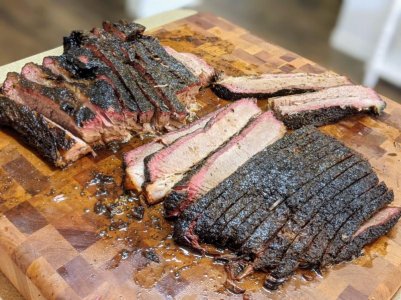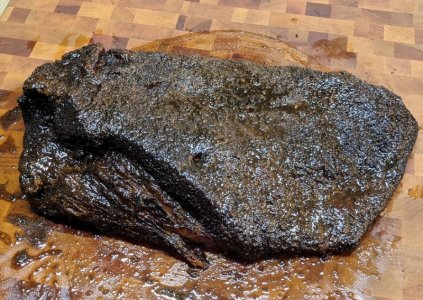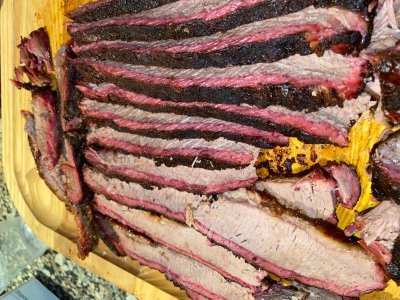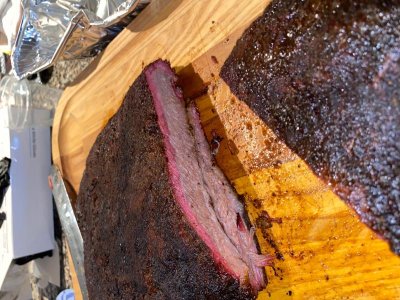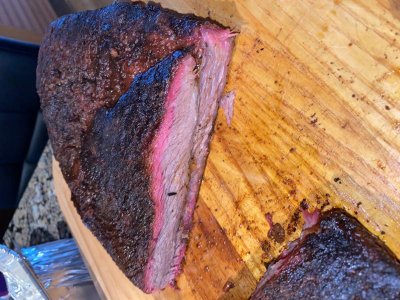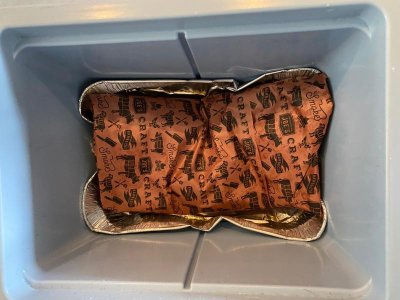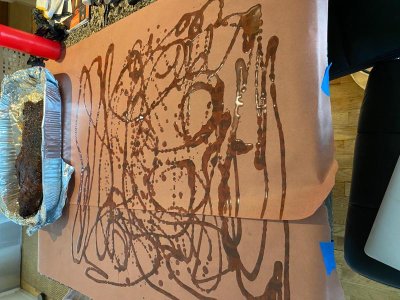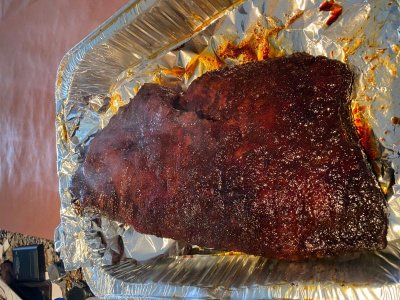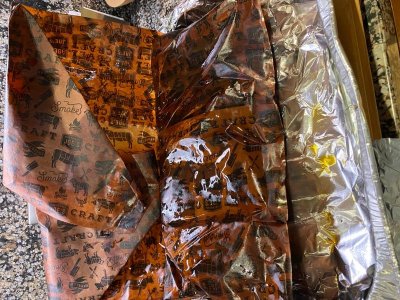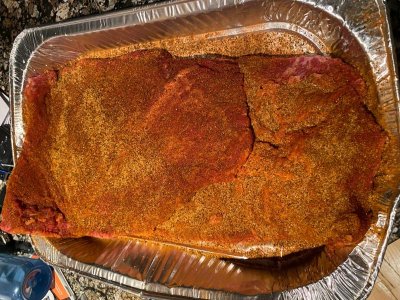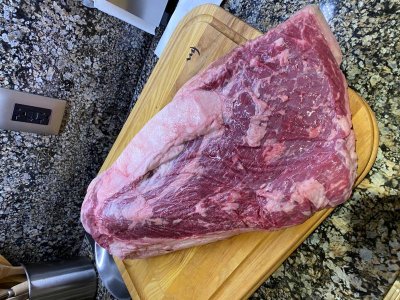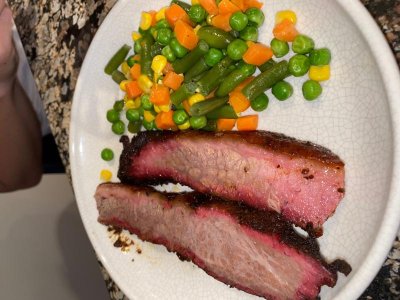So I started a choice packer from Sprouts about 8pm last night intending to try the tallow thing.
I severely underestimated how wet my splits were after the snow/rain we've had in Texas over the last few weeks, though, and after fighting temps for about 4 hours I pulled the brisket. I put it in a foil pan and covered it with foil to move to the oven inside. I figured if it was a mess, I could at least shred it for quesadillas or something.
About 12 hours at 250 in the oven got it to 203 and jiggly. Normally I just wrap and shove in a cooler full of towels for a few hours after pulling it off the smoker, but since I was already using the oven I just turned it off and left it resting in there until it hit 140, probably another 6 hours.
It ended up being one of the best briskets I've cooked in a long time. Great texture that seemed to hold its elasticity longer than normal. My home cook complaint is usually that brisket may be great when I slice it, but 5 minutes later it's cold and hardens. This didn't do that. It went into the foil without great color, but ended up with the same dark bark I get when it stays in the offset. Smoke didn't seem to be affected, either, even at 4 hours.
Pleasant surprise that reinforced a lot of what was said in here about the holding environment.

